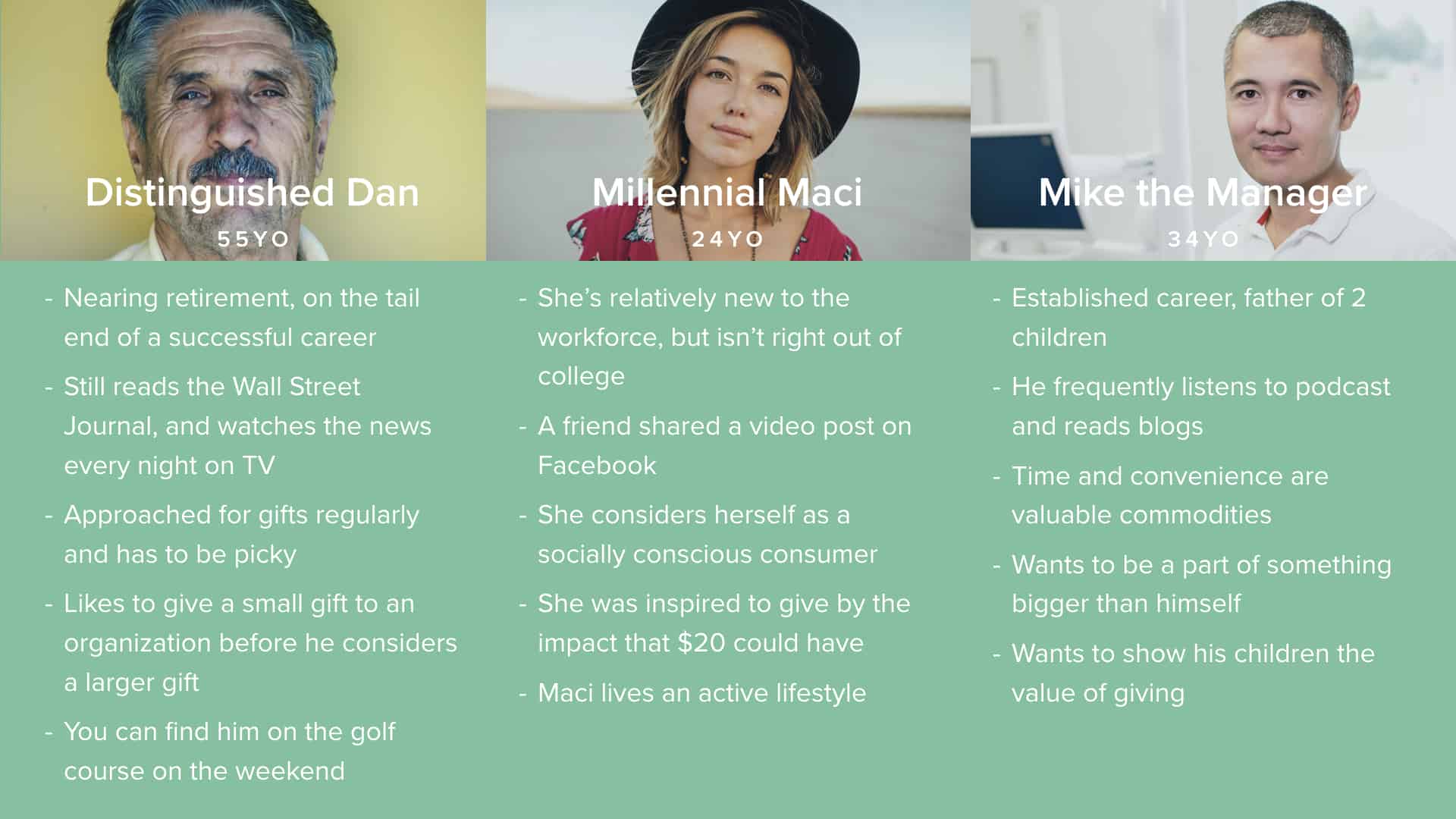Why Personas Can Help You Understand Your Donors

In part 3 of this blog series, I introduced the concept of grouping our constituents into personas rather than stages. In this post, we’ll talk about why this matters.
Golf and friends
If I receive an invite to a golf outing, but I don’t play golf, I may not pay as close attention to this message. Instead, if I’m invited to a next free concert event because I first engaged with the organization at their last free concert, there’s a much greater chance of keeping me engaged.
It’s important to remember that whenever you’re participating in mass communication, you’re still just communicating with individuals in a particular time and place. If this communication isn’t relevant to that individual, it’s just noise.
I can’t begin to quantify how many messages I filter out of my life on a daily basis that I do not find to be relevant. The more personalized we can get with our communications, the better our chances of meeting our constituents with relevant engagement opportunities with our organizations.
Constituent engagement is a lot like a friendship. A healthy friendship consists of listening and giving, not just asking and taking. When we get the privilege of meeting new constituents, we need to listen and give. You should be asking why he/she is interested in getting involved, how they want to engage, how they like being communicated to, and more.
These methods are in stark contrast to the common practice of dropping him/her into a group and put on a path of mass communication.
Example: first time donors
Let’s take a look at three people who just gave to your organization for the first time. Let’s meet Distinguished Dan, Millennial Maci, and Mike the Manager. In many organizations, when a first-time donor gives, they are dropped into a development cultivation plan to keep these donors giving. However, if we look at these three constituents for what they are – very different types of people – we can see that we need to engage them in different ways.

By following up with these new constituents, we can learn a lot of things about them. Dan would be a great person to invite to a golf outing, where Maci may not even own a set of clubs. Maci loves to be active and could be invited to volunteer on the weekend, where Mike seems like he could be engaged with a monthly giving program that gives updates he can share with his children.
By using the knowledge that we have about our personas, we can appropriately create and introduce engagement points to the right people at the right time.
Think about the scores of emails you get on a daily basis. It’s very likely the organizations that send the most are the ones you read the least. Point being: our touches of contact with constituents is numbered. The more we reach out, the more they begin to be desensitized to our asks. However, if we can target what we say and how we say it to whom we want to say it to, our impact will be drastically increased.
Effectively plan
It’s important to remember that these personas are a semi-fictional representation of constituents within your organization’s reach. They’re meant to encapsulate a number of constituents who are like Dan, Maci, or Mike. It’s our job to learn more about these constituents as they come to us and find ways to keep them engaged. Building out engagement tracks for each persona type may help our organizations more effectively plan for and prepare appropriate engagement points.
Today’s organizations have the technology to gather and sort through more data than ever before – and it’s time we capitalize on it. Take a look at how Make a Wish America is doing just that and using persona-based marketing to attract and engage their constituents.
Schedule a live demo with Bloomerang, and we’ll show you how easy it is to create and automate reports, utilize online and offline fundraising tools, quickly integrate and access all your data, and ultimately create more time to engage your donors.